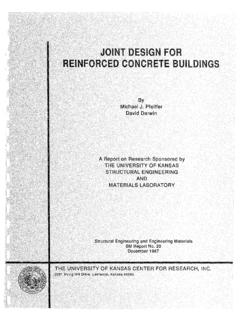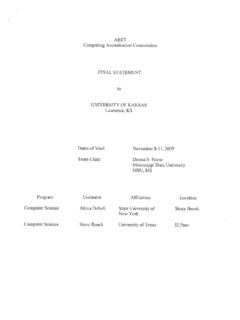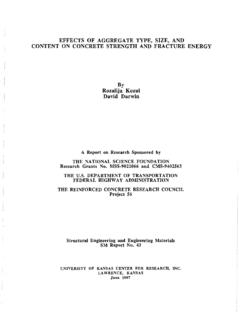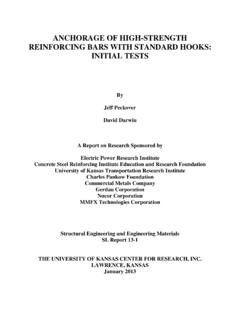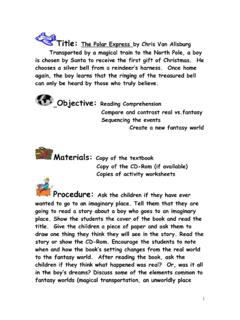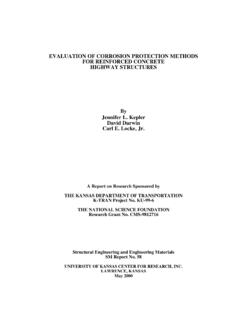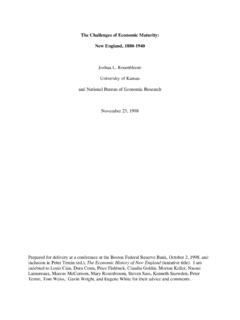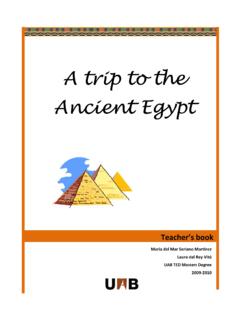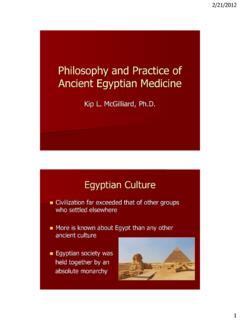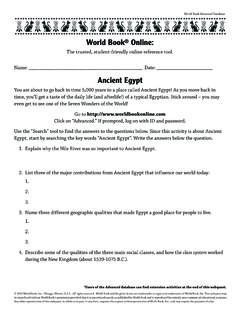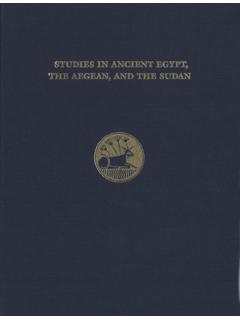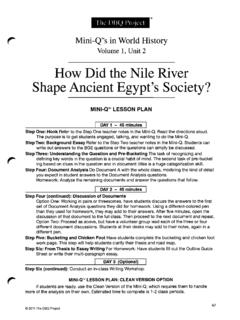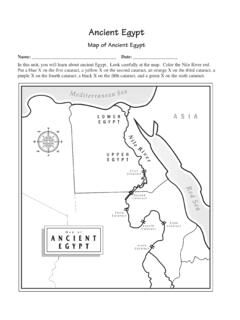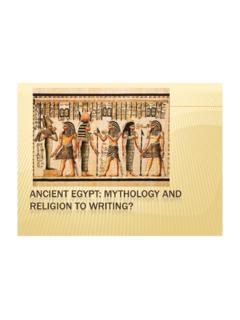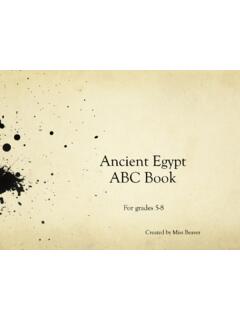Transcription of Ancient Egypt By December 11, 2002
1 Ancient EgyptByMaria Lourdes Olivares-EscobedoEleanor T. RaggettPatricia WeaverT & L 819Dr. Paul GarciaDecember 11, 20022 Ancient CivilizationsIntroductionAncient Civilizations is a thematic unit that introduces the basic elements ofculture. Through studying Ancient Egypt , the students will explore how geography,anthropology, psychology, the economic system, political structure and social practicesdetermine how people live. The interplay between these forces helps define a sixth grade classroom consists of 30 percent English Language Learners(ELL) of varying English proficiency, from beginning to care was taken to ensure that all students were able to contribute in eachactivity, regardless of the level of English proficiency. For example, students wereallowed to write in his/her own language, use visual aids, work with a partner and group,and share his/her own language and unit contains the following skills: Cooperative groups Technology (Internet) Games and songs Drawing/Creative expression Hands-on activities Communication skills Language Social Studies Research Math (Graphing) Writing PresentationWe feel that the variety of instructional strategies used will allow for maximumparticipation, no matter the level of English proficiency and CivilizationsTable of ContentsLesson 1 Intro/VideoIntroduction to Ancient EgyptLesson 2 GeographyMaking Relief MapsLesson 3 HistoryCreating TimelinesSongLesson 4 Political ScienceComparing Types of GovernmentsLesson 5 InternetTrading in Ancient EgyptLesson 6 TechnologyHow Do You Do That?
2 Lesson 7 ScienceWhat Did the Ancient Egyptians ConsiderMedicine?Lesson 8 SpongeChoosing a Career in Ancient EgyptLesson 9 LanguageHieroglyphicsLesson 10 AnthropologyMummiesLesson 11 ArchitecturePyramidsLesson 12 GamesKing Tut Senet 4 ESL Goals and StandardsGoal 1: To use English to communicate in social settingsStandards:1. use English to participate in social interaction2. interact in, through, and with spoken and written English for personalexpression and enjoyment3. use learning strategies to extend their communicative competenceGoal 2: To use English to achieve academically in all content areasStandards:1. use English to interact in the classroom2. use English to obtain, process, construct, and provide subject matterinformation in spoken and written form3. use appropriate learning strategies to construct and apply academic knowledgeGoal 3: To use English in socially and culturally appropriate ways1. use the appropriate language variety, register, and genre according toaudience, purpose, and setting2.
3 Use nonverbal communication appropriate to audience, purpose, and setting3. use appropriate learning strategies to extend their sociolinguistic andsociocultural competence5 Lesson 1: Introduction to Ancient EgyptESL StandardsGoal 1: Standards 1, 2 Goal 2: Standards 1, 2 Oxford StrategiesDirectMemory- Review of United States historyCognitive- Receiving information, taking notesMetacognitive- Linking with already known materialIndirectSocial- Asking questions Cooperating with parentsMultiple IntelligencesKinesthetic, artistic, interpersonal, verbalProcedure:1. Teacher asks what the students remember from the 5th grade unit on United Stateshistory. What do you remember? What do you know about the development of political system? How did geographic features affect the economy and growthof the Teacher makes a list on the board of what the students know. She asksthem if they can name four major factors in the development of the United The teacher introduces Ancient Egypt by showing Ancient Egypt , a video (BalaCynwyd, PA: Schlessinger Video Productions, c1998).
4 The video is 23 minutes inlength. In the video archeologist Arizona Smith and his young detective-in-trainingexplore the wonders of Ancient To summarize the video, the students recall some major characteristics of AncientEgyptian culture. The teacher records student responses on the board. The teacherdisplays an overhead transparency of the Elements of The students categorize their responses and enter them into the Element of Cultureweb. They also write the homework assignment in their planners have their familyhelp identify important customs, beliefs and practices in their family s way of life orculture. Students may record their findings in their first language. Students willpresent their findings; they have the options to select the format written, verbal, orpictorial. Students may bring artifacts that reflect their culture. Social studiestextbooks are available for : Ancient Egypt video, overhead transparency of The Elements of Culture, 25 copies ofThe Elements of Culture, 25 World Explorer, The Ancient World texts, overheadprojector678 Lesson 2: Geography of Ancient EgyptESL StandardsGoal 1: Standards 1, 2 Goal 2: Standards 1, 2 Oxford StrategiesDirectMemory- reviewing Lesson 1, recalling types of mapsCognitive- Receiving information, analyzing and reasoningIndirectMetacognitive- arranging and planning learningSocial- cooperating with othersMultiple IntelligencesKinesthetic, artistic, interpersonal, verbalProcedure:1.
5 Teacher reviews Lesson 1 and displays The Elements of Culture , economics, sociology, anthropology, psychology, political science,technology and history are identified as components of Five students share their personal culture. At the beginning of each lesson, fivemore students will share their findings until all have shared. As each studentshares, the class will identify which components of culture are Teacher displays a relief map of Ancient Egypt . Students recall the differenttypes of maps political, relief, populations, Students identify chiefgeographical features of Ancient Egypt and discuss how it contributed to itsdevelopment. Some specific features are the rich, fertile land along the NileRiver; the 4,160 mile Nile River as a transportation system; the surrounding RedLands, the harsh deserts that provided Ancient Egypt a buffer from Teacher hangs a world relief map. ELL students identify major geographicalfeatures that contribute to their cultures.
6 English-speaking students identify chiefgeographical features of the United Homework: Students are divided into pairs with at least one person hasproficiency in English. Each pair is to choose one of the following options: writean essay comparing the United States highway system with the Nile River ofAncient Egypt ; create a relief map of Ancient Egypt ; prepare a comic strip of theyearly cycle of flooding and growing of crops along the Nile River. The qualityof the homework will help the teacher assess the students understanding of therole geography plays in : Elements of Culture overhead, relief map of Egypt , world map, overheadprojector9 Lesson 3: History of Ancient Egypt ESL StandardsGoal 1: Standards 1, 2 Goal 2: Standards 1, 2 Oxford StrategiesDirectMemory- review of components of cultureCognitive- analyzing and reasoning, practicing reading and speakingIndirectMetacognitive- centering learning, arranging and planning timeline activitiesSocial- asking questions, cooperatingMultiple IntelligencesKinesthetic, artistic, interpersonal, verbalProcedures:1.
7 Five students share their cultural findings. Teacher helps students categorizefindings into cultural Teacher pairs students for reading. Teacher ensures that there is an Englishproficient reader in each pair. Each pair is assigned specific pages to read onEgyptian history. The students will use World Explorer, The AncientWorld({Prentice Hall: 1998) pp. 24-25, 52, 69, 173. 177. 194. Upon completion of reading, each pair creates an illustration of the historicalevent and a sentence or two describing the Using butcher paper, two volunteers draw a 25 foot time line. Each pairidentifies where their event fits in the sequence of events. They paste theirillustration and written description on the appropriate section of the teacher assesses their understanding by the placement of the events andthe illustrations and written Class discusses who the important people are in Ancient Egyptian discusses how the Egyptians evolved from nomadic hunter-gatherersinto Homework: Students are to discuss the critical and influential events of theirlife with their families.}
8 Then, they are to create a personal timelines. Thetimelines may be annotated in the first language of the :25 World Explorer, The Ancient World texts, 25 feet of butcher paper, 12 pieces ofdrawing paper10 Lesson 4: Ancient Egypt GovernmentESL StandardsGoal 1: Standards 1, 2 Goal 2: Standards 1, 2 Oxford StrategiesDirectMemory- review of components of culture, creating mental linkages, reviewing systemCognitive- analyzing and reasoning, practicing reading and speakingIndirectMetacognitive- centering learningSocial- asking questions, cooperating,Multiple IntelligencesArtistic, interpersonal, verbal, musicalProcedure:1. Five students share their cultural findings. Teacher helps class categorize findingsinto the components of Teacher refers to the Ancient Egypt timeline and asks, Who were the leaders andrulers of Ancient Egypt ? The class discusses what type of government Egypthad. Teacher adds pharaoh, scribe, priest, slave, theocracy to the vocabularyword In reading pairs, students read World Explorer, pp.
9 Teacher leads class discussion of the United States form of government, whichthe class studied in fifth grade. The class makes a comparison and contrast chartbetween the responsibilities and rights of Ancient Egyptian citizens and UnitedStates citizens. Teacher makes a chart on the overhead to guide students in theactivity. Homework: Prepare a short written, illustrated or oral presentation of howdifferent life would be if our country were ruled by a pharaoh. Students mayvisit and share with the class the Nelson-Atkins Museum s exhibit of Art of theLega: Meaning and Metaphor in Central Africa in lieu of the above Teacher ends the lesson with the song on the following : Ancient Egypt timeline, 25 World Explorer texts, overhead projector11 Where Have All the Pharaohs?Sung to the tune of Where Have All the Flowers Gone? Where have all the pharaohs gone?Long time passingWhere have all the pharaohs gone?Long time agoWhere have all the pharaohs gone?
10 Robbers have picked their pyramidsWhen will they return?When will they return?Where have all the robbers gone?Long time passingWhere have all the robbers gone?Long time agoWhere have all the robbers gone?Taken treasures every oneWhen will they return?When will they return?Where have all the treasure gone?Long time passingWhere have the treasures gone?Gone for profit every oneWhen will they return?When will they return?Where have all the profits gone?Long time passingWhere have all the profits gone?Long time agoWhere have all the profits gone?Gone to museums quite a fewWhen will they return?When will they return?Where have all the pharaohs gone?Long time passingWhere have all the pharaohs gone?Long time agoWhere have all the pharaohs gone?When will they return?When will they return?12 Lesson 5: Internet Lesson on Trading in Ancient EgyptESL StandardsGoal 2: Standards 1, 2 Goal 3: Standards 1, 3 Oxford StrategiesDirectMemory-Reviewing of what is a societyCognitive-Practicing Receiving and sending messages Creating structure for input and outputIndirectMetacognitive-Centering your learning Arranging and planning your learningSocial-Asking questionsCooperating with peersMultiple IntelligencesInterpersonal, Visual/Spatial, LinguisticProcedure:1.
